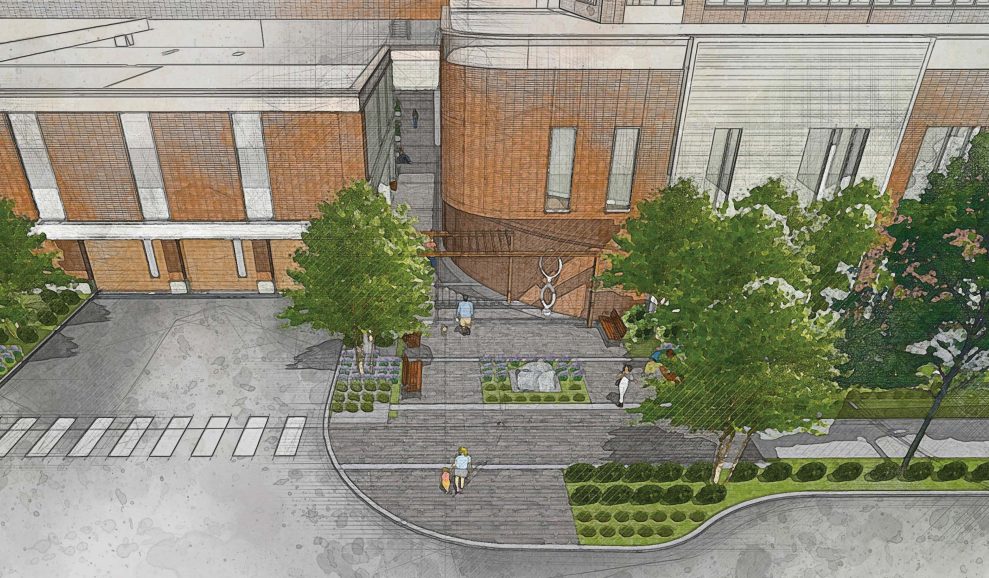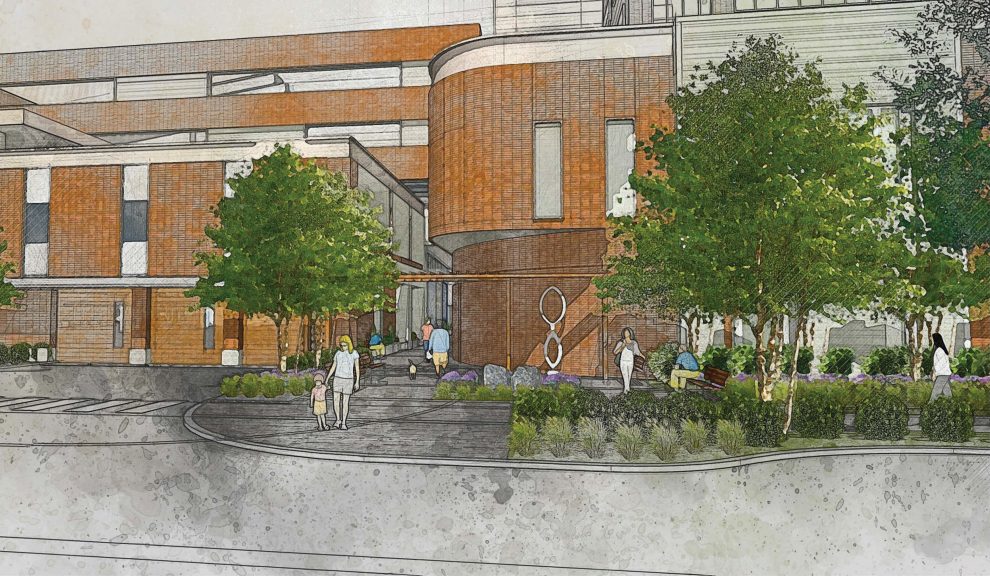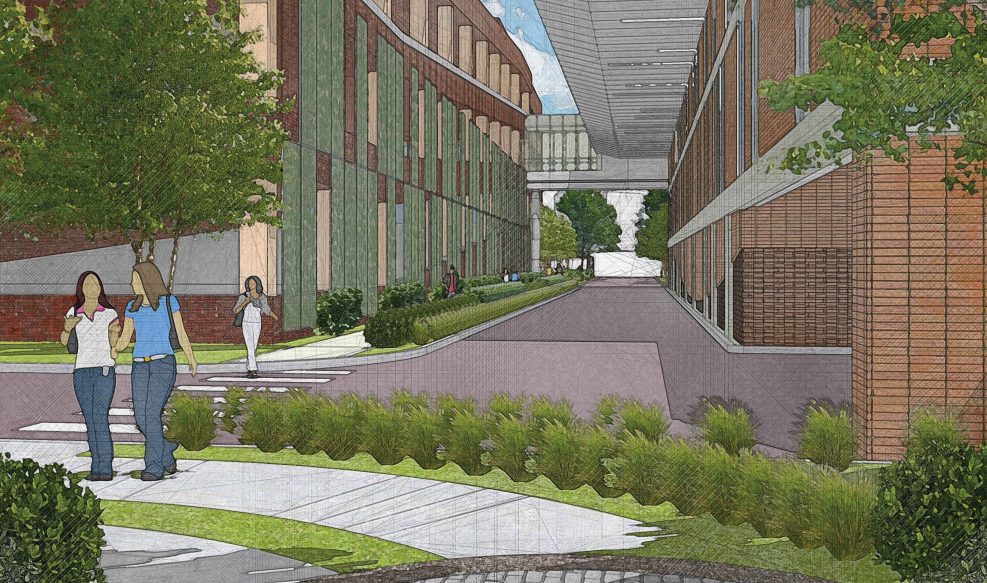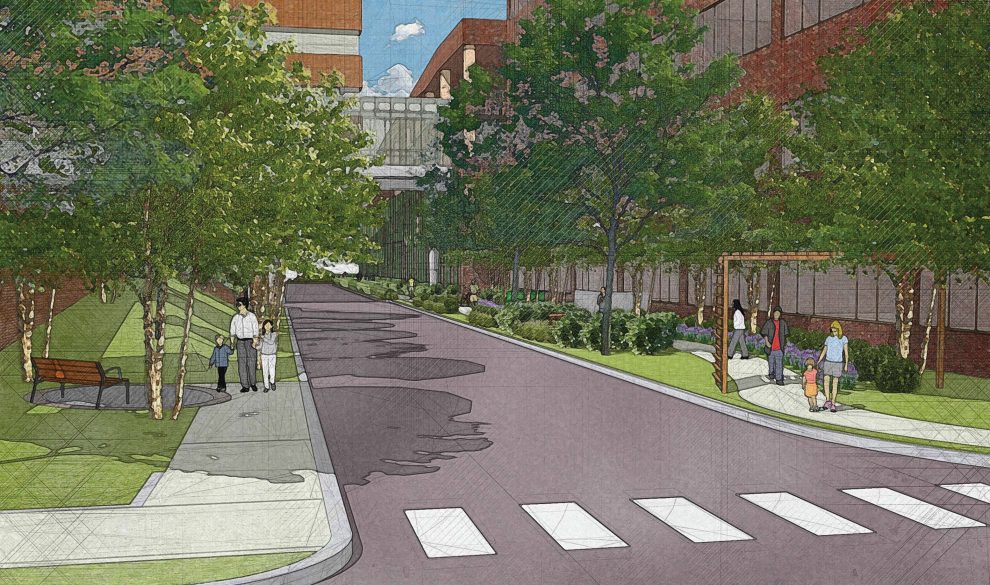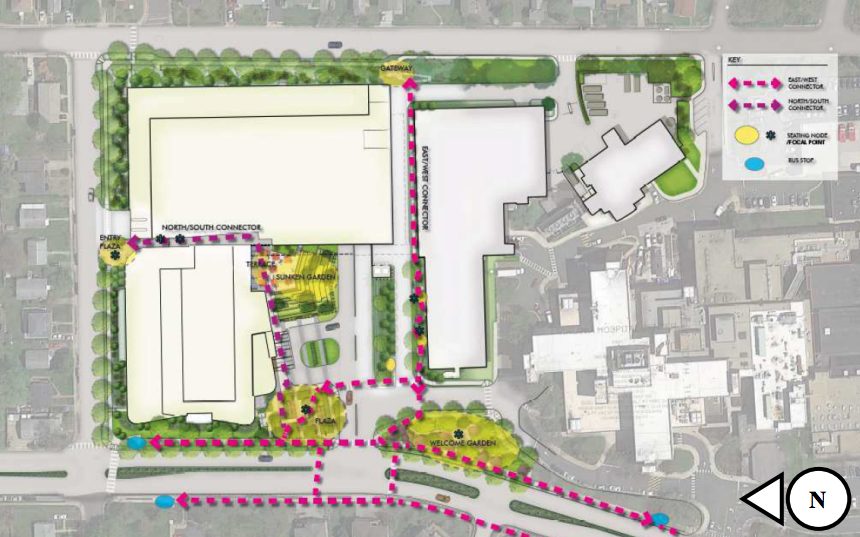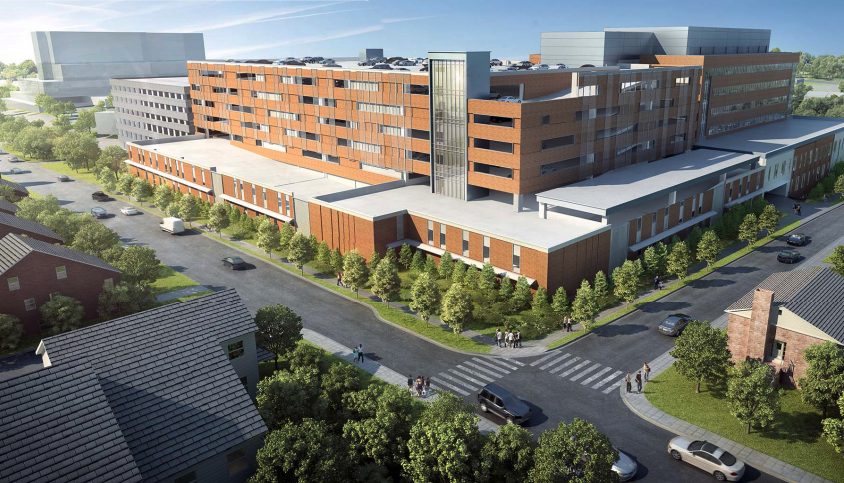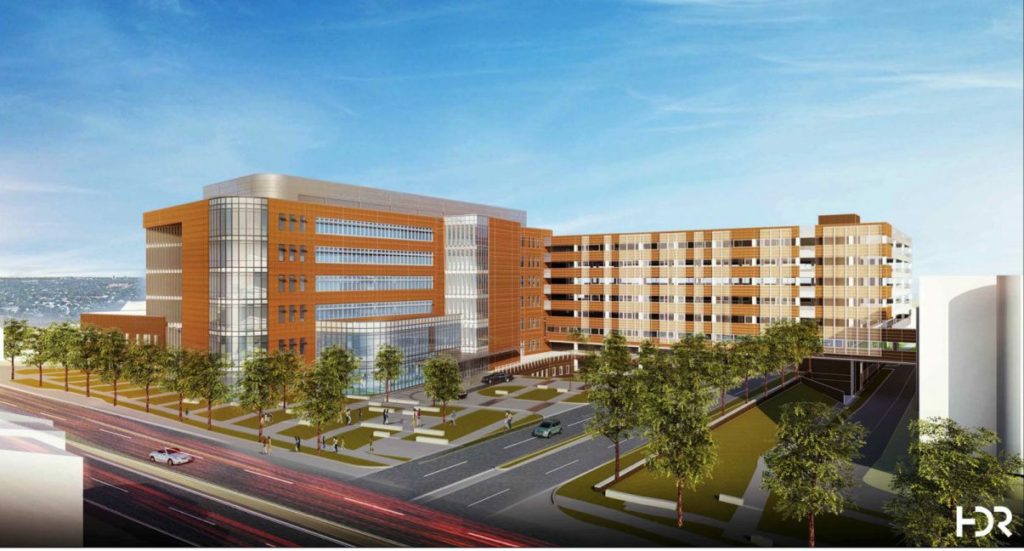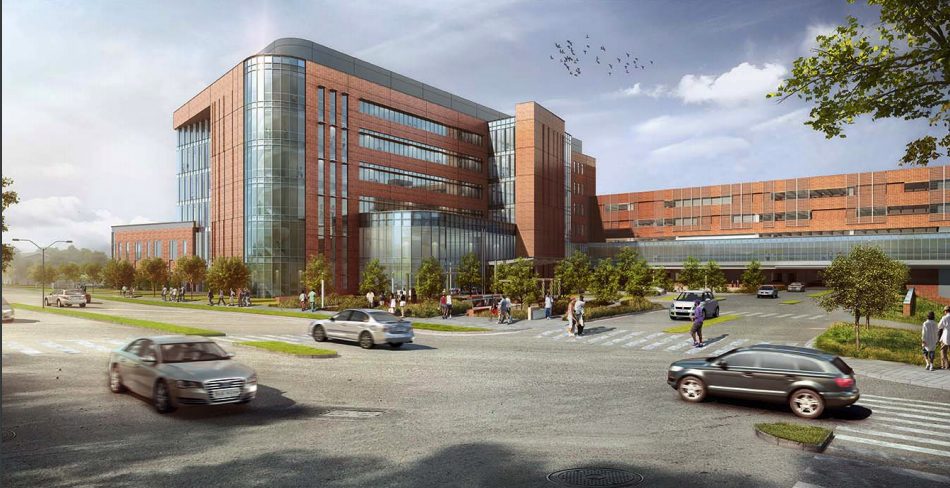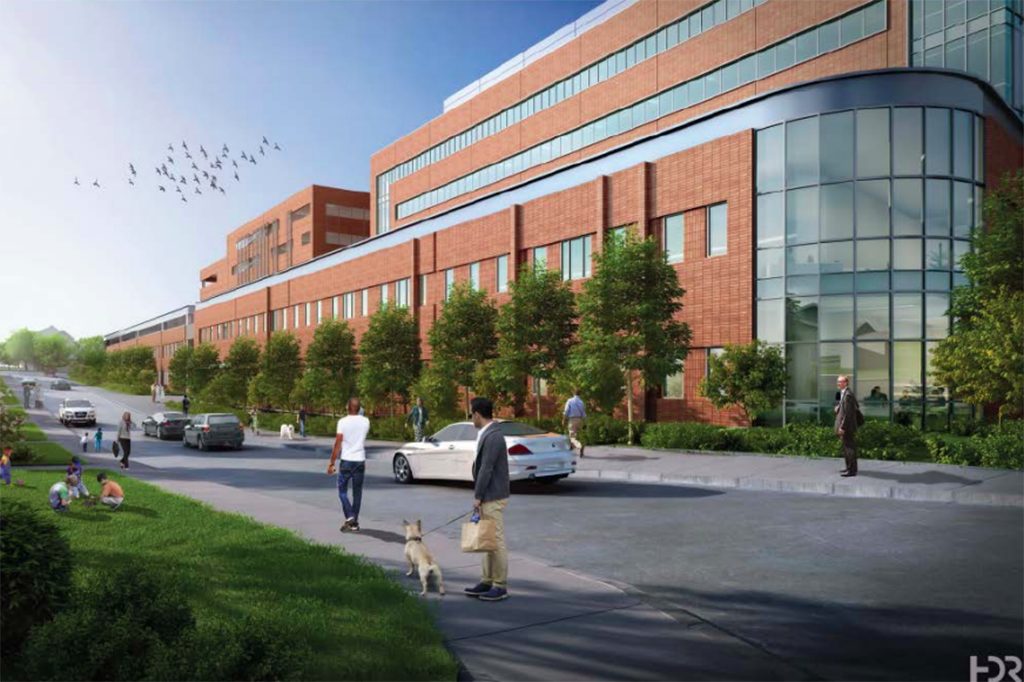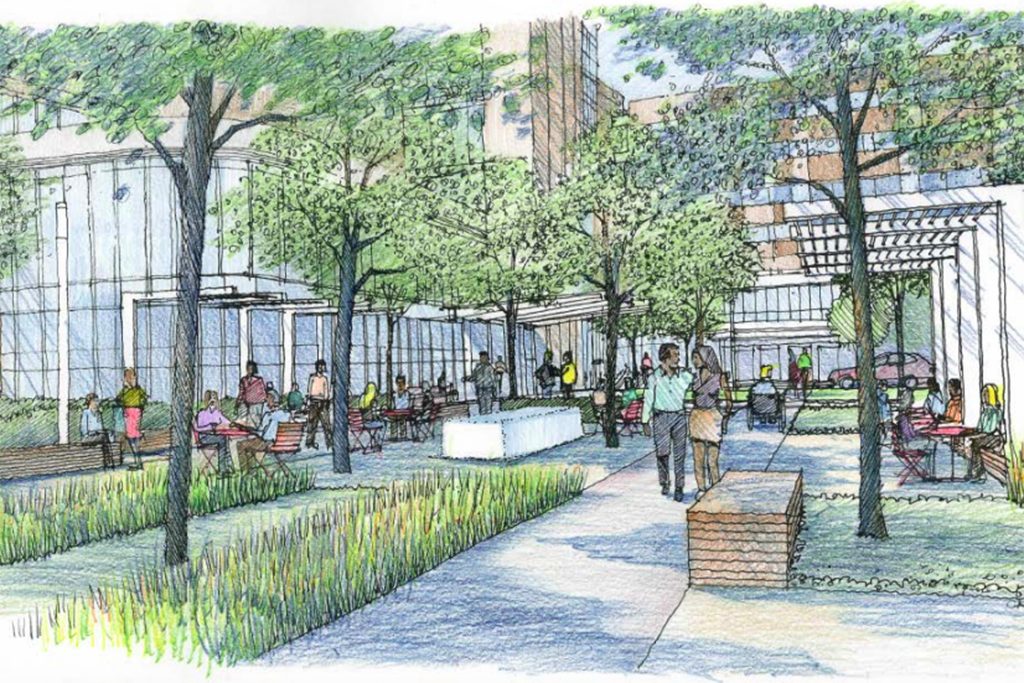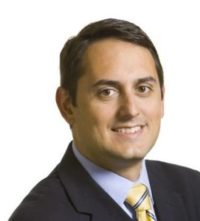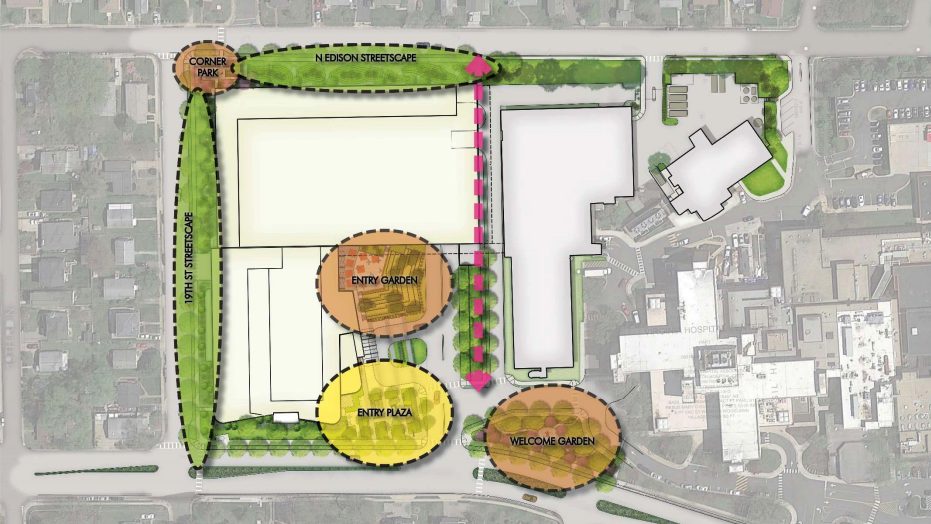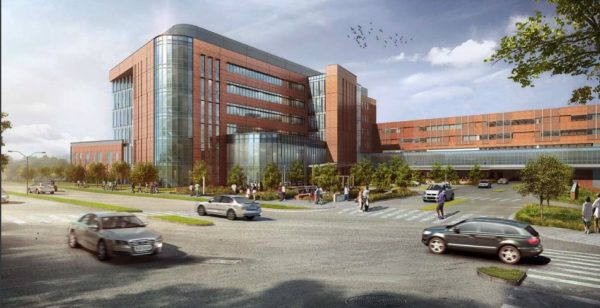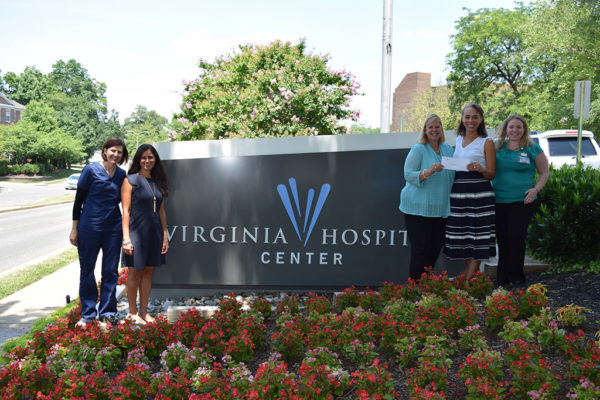The Virginia Hospital Center might’ve finally won the county’s approval on designs for a hefty new expansion of its North Arlington campus, but officials have months of work left to do before neighbors will start seeing any construction in the area.
Years from now, the hospital will add a seven-story outpatient facility and a 10-story parking garage to its property at 1701 N. George Mason Drive, after the County Board narrowly approved plans for the $250 million project on Tuesday. The expansion will ultimately help the county’s lone hospital add 101 new beds, in a bid to match rising demand in the area.
But VHC officials say they won’t be able to put shovels in the ground just yet. First, they need to complete a land swap with the county to make the expansion possible.
Arlington officials and the VHC agreed last year that the county would send the hospital a property adjacent to its campus at 1800 N. Edison Street in exchange for one at 601 S. Carlin Springs Road. However, the swap was contingent on the Board signing off on the expansion plans in the first place.
Community concerns over the project’s design meant that the Board repeatedly delayed its consideration of the VHC proposal, but with that green light finally given, hospital executives will now turn to finalizing the terms of the land swap. Adrian Stanton, the hospital’s vice president for business development and community relations, says that process will wrap up around next “May or June” at the latest, teeing up construction to start soon afterward.
“It’s been a good three years we’ve been involved in this process, so absolutely it was a sigh of relief when we got the approval,” Stanton told ARLnow. “We wanted to be in front of the Board back in May because we need the beds today… and there a lot of specifics involved, and a lot left to happen.”
Some of the process of sorting out the details of the land swap agreement are fairly mundane, like basic site inspections. Others are a bit more fraught — for instance, the county and the hospital will have to agree on the Edison Road property’s value.
The terms of the agreement call for the hospital to pay either $12.56 million or the property’s appraised value to acquire the site — it all depends on which amount is larger. County records show the property was valued at about $8.9 million this year. By contrast, the S. Carlin Springs Road land the hospital will send to the county was valued at $38.8 million.
Stanton says that the process of hashing out the land swap could wrap up more quickly than they’re expecting, but the hospital is tentatively planning on kicking off construction by “somewhere around June or July 2019” in his most conservative estimate of the timeframe.
Once that happens, Stanton says the hospital will likely need another approval from state regulators before it can wrap up the construction. VHC previously earned a “Certificate of Public Need” from the Virginia Department of Health, certifying that enough demand exists in the area to add more beds to the facility.
The catch is that state officials only allowed VHC to add 44 beds, rather than the full 101 it’s planning. Stanton says that’s because the state only examines demand in five-year increments, while the hospital is projecting a need for 101 beds by looking at a 10-year timetable.
“We agreed to that smaller number with the acknowledgement that we will be back asking for more,” Stanton said. “Our intent is to be able to get the additional beds we feel we need, and do that before construction is complete.”
As for the construction timeline, Stanton says the hospital’s “guesstimate” is that the new garage will be open by the first few months of 2021. Then, he hopes the new outpatient facility will be ready by the second quarter of 2022.
Once that new “pavilion” is ready, the hospital will begin moving its existing outpatient equipment over to the new facility, opening up space for the 101 new beds. However, Stanton cautions that process will require some complicated renovation work, so it’s difficult to know when it will be ready.
“It shouldn’t take as long [as the new construction], but we’ll be doing construction in the existing patient tower,” Stanton said. “It’s not as easy a construction project because we’re working around our existing operations. So it’s by no means easy.”
Looking even further down the line, hospital leaders eventually hope that this expansion will lay the groundwork for the full redevelopment of the campus. However, Stanton’s “best guess” is that work on that process won’t start for at least 15 years or so.
Stanton hopes that hospital officials can use that time to rebuild trust with the surrounding community.
The expansion’s design process became an acrimonious one at times, with neighbors accusing the hospital of ignoring their concerns or even walling off the surrounding community with its new facilities. And Stanton admits to no small amount of frustration that the process turned so contentious.
He argues that the hospital’s initial outreach to the community was “largely positive,” before the county’s formal site plan review process got started. He believes that VHC officials managed to build plenty of consensus around the project, back when neighbors formed their own ad hoc committee to work with the hospital.
“I thought we had a very strong connection with those communities,” Stanton said. “It doesn’t mean were always in agreement, but we felt we, and the County Board, were getting positive reviews from the community about conversations with the hospital. But that seemed to change when we went through formal process with the county, which was really frustrating to me.”
Accordingly, Stanton is pledging “continual communication” between the hospital and its neighbors, to try and recapture the spirit of those early days of planning the expansion, leading to much more harmonious community conversations around any future redevelopment.
“I would only hope that relationship and communication can be just as good, if not better, than before we started this process,” Stanton said.


